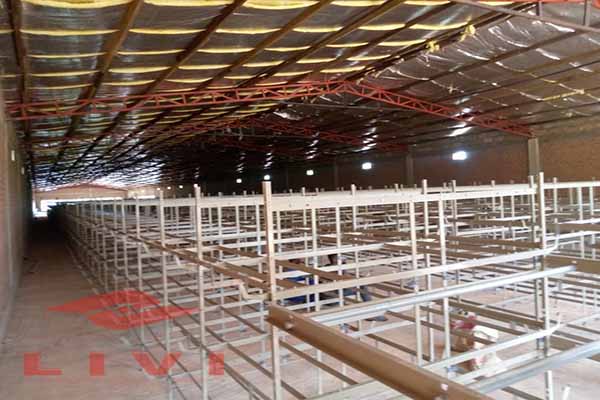Optimizing Broiler Production with Rate Battery Chick Cages
Time : 2025-06-29
The broiler industry, with its high demand for rapid growth and efficient processing, relies heavily on specialized equipment to maximize output. Among the various components of this machinery, rate battery chick cages have emerged as a crucial element in the production process. This article delves into the significance of rate battery chick cages in broiler production, their design principles, and how they contribute to the overall efficiency of the broiler rate battery system.
Introduction to Rate Battery Chick Cages
Rate battery chick cages are specifically designed to house broiler chicks during their early stages of growth. These cages are an integral part of the rate battery system, which is used to manage the broiler chickens’ environment, ensuring optimal growth conditions.
What is a Rate Battery System?
A rate battery system is a series of interconnected cages that allow for a controlled and efficient flow of broiler chicks through various stages of production. These systems can accommodate different numbers of chicks based on the production capacity and the specific growth rates required.
Key Features of Rate Battery Chick Cages
1. Space Efficiency
One of the primary advantages of rate battery chick cages is their ability to maximize space utilization. The vertical arrangement of these cages allows for more birds per square meter, reducing the amount of space required for housing.
2. Environmental Control
The design of rate battery chick cages facilitates better environmental control, which is critical for broiler growth. These cages provide precise control over temperature, humidity, and air quality, creating an ideal microclimate for the chicks.
3. Health Management
The vertical design of rate battery chick cages helps prevent the spread of diseases among birds. The separation of each chick within the cage minimizes the risk of respiratory diseases and other common issues in broiler chickens.
4. Feeding Efficiency
The feeding systems integrated with rate battery chick cages are designed to minimize feed wastage and ensure that each chick receives the correct amount of feed. Automated feeding mechanisms help maintain consistent feed intake, which is essential for uniform growth.
Design Principles of Rate Battery Chick Cages
1. Size and Capacity
The size and capacity of rate battery chick cages depend on the breed of broiler chicken, the desired growth rate, and the production goals. The standard dimensions are often determined by industry standards and the specific requirements of the operation.
2. Cage Materials
The materials used in the construction of rate battery chick cages should be durable, easy to clean, and resistant to corrosion. Common materials include steel, wire mesh, and plastic.
3. Drainage and Ventilation
Proper drainage and ventilation are essential for the health of the chicks. The design must ensure that waste material can be easily removed and fresh air can flow throughout the cage, preventing the build-up of ammonia and other harmful gases.
4. Access Points
Easy access for farmers and technicians is crucial for maintenance and monitoring. The design should include secure and convenient points for entering the cage without disturbing the chicks.
Benefits of Rate Battery Chick Cages
1. Improved Growth Rates
By providing controlled environmental conditions and precise feeding, rate battery chick cages can lead to significant improvements in broiler growth rates. This translates to faster production and higher yields.
2. Reduced Costs
Efficient use of space and resources in rate battery chick cages can lead to reduced costs associated with housing, feeding, and waste management. The vertical design also minimizes the amount of land required for broiler housing.
3. Enhanced Worker Safety
The design of rate battery chick cages minimizes the risk of injury to workers, as the chicks are kept in a controlled environment. This also helps in reducing the need for extensive labor to handle the chicks.
Challenges and Solutions
Despite the numerous benefits, there are challenges associated with using rate battery chick cages:
– Environmental Impact: The production of cages and their eventual disposal can have an environmental impact. Solutions include using recyclable materials and designing for durability to extend the lifespan of the cages.
– Initial Investment: The cost of installing a rate battery system can be high. However, the long-term cost savings and increased productivity often outweigh this initial investment.
Conclusion
Rate battery chick cages are an essential component of the broiler production process, offering numerous benefits that enhance growth rates, reduce costs, and improve the overall efficiency of broiler farming. As the industry continues to evolve, the design and implementation of these cages will undoubtedly play a pivotal role in shaping the future of broiler production.
Tags












